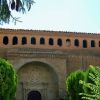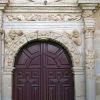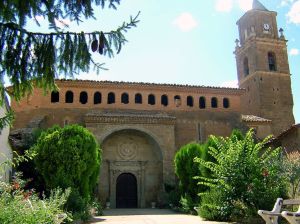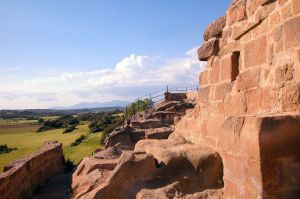In the Kingdom of Aragón the 16th century was a prosperous era during which the population grew and work was plentiful. New land was ploughed and agricultural production increased alongside industrial and commercial activity. The society that lived through these changes however continued to be imbued with a medieval-type religion whose manifestations were present in all aspects of life, culture and art of the era. This fact ensured that there were more churches and altarpieces built than palaces and secular buildings.In Somontano the majority of the small parish churches built after the reconquest of the territory from the Muslims (11th and 12th centuries) were too small for a growing population. They were seen as small, old and dark and were in dire need of repair.
This gave rise to a period of intense constructive activity, during which many churches were built in keeping with the norms and technical solutions of the Gothic era. Despite the artistic changes in construction style that were filtering into the bigger centres, here the older methods were still considered valid for a further 100 years.
To create an intentional contrast between the starkness and simplicity of the exterior walls and the richness of the ornamented areas, the region’s late-Gothic churches incorporated a rich decorative language around their main doorway. This was reminiscent of Italian Renaissance and featured medallions, garlands, figures of children, columns, balustrades and masks. The entrance to the parish church of Azara is one of the most attractive and most elaborate Renaissance works of Somontano. On one of the medallions is it possible to read the date it was made: 1576.
The interior decoration of Somontano’s churches is focused on the star shape design of the vaulted ceilings, whose importance is highlighted by the positioning of the windows high in the walls, so plunging the lower parts into semi-darkness.
On the outside of the buildings vertical buttresses provide a counterpoint to the horizontal walls and are crowned by a gallery of brick arches that serve to ventilate the beams and girders of the ceiling.
This church is dedicated to Santa Lucia. Tradition says that this saint appeared above one of the sandstone rocks that dot the rolling hills close to Peraltilla. In the Middle Ages people would appeal to the saint for help with eye problems and diseases as her name comes from the Latin name lucem, or light, which we instinctively relate to our sense of sight. This gave rise to the legend of a tyrant who demanded that his eyes be torn out to be presented to the saint on a platter.
The feast of Santa Lucia is celebrated on 13th December, one of the shortest days of the year, the symbolism being that it will light the cold and darkness of winter. There is a saying “For Santa Lucia the night shortens and the day lengthens.”








